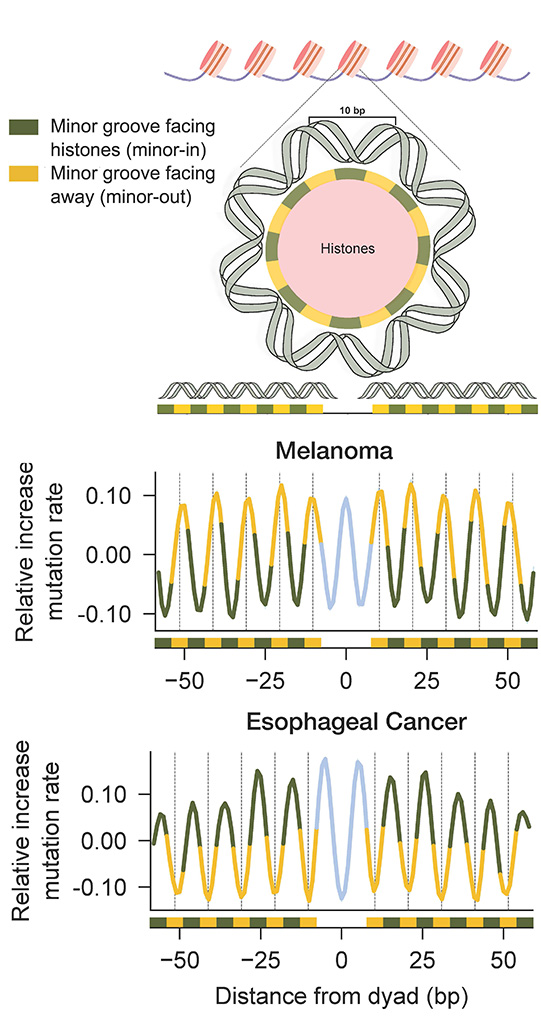Meters of DNA are highly compacted into each cell’s nucleus. The most basic structure of this compaction are nucleosomes. 146 bps of DNA wrapped around proteins called histones. Every 10bps, the minor groove of the DNA faces towards or away from histones.
Through the study of the distribution of somatic mutations in more than 3,000 human tumours, we have discovered that this 10bp periodic structure of the DNA around nucleosomes produces a periodicity in the rate of generation of somatic mutations. The periodic pattern was also observed in germline mutations, which are passed on to the offspring.
Along the genomes of eukaryotes, A/T di-nucleotides are more likely to occur with a 10bp- periodicity (WW periodicity) , which has long been associated to the presence of nucleosomes. This WW periodicity has been speculated to have arisen through selection of mutations conducive to sequences that favor the bending of DNA around nucleosomes. We propose that the periodic rate of somatic and germline mutations that we observed could have contributed through evolutionary time to the generation of the WW periodic pattern in the genomes of eukaryotes (Figure).
The findings presented here have strong implications for understanding mutational and repair processes in human DNA, understanding the evolution of eukaryotic genomes, and for the study somatic and germline evolutionary processes.
Reference
